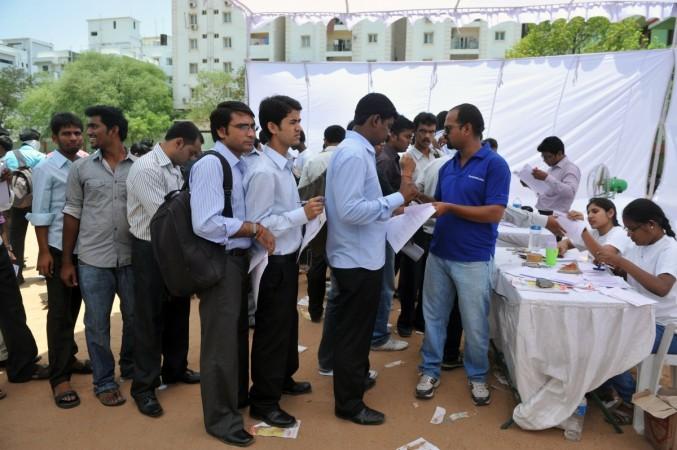
An official survey that has been withheld by the government shows India's unemployment rate rose to a 45-year high during 2017-2018, the Business Standard reported on Thursday, delivering a blow to Prime Minister Narendra Modi just months before what is expected to be a closely fought general election.
The assessment by the National Sample Survey Office conducted between July 2017-June 2018, showed the unemployment rate stood at 6.1 per cent, the highest since 1972-73, the newspaper reported.
The report said that joblessness stood at 7.8 per cent in urban areas compared with 5.3 parts in the countryside.
The data is significant because this was the first comprehensive assessment of India's employment situation conducted after Modi's decision in November 2016 to withdraw most of the country's banknotes from circulation overnight, the report said.
The government declined to confirm or deny the report.
"We have not released the report. I do not want to comment on it," Pravin Srivastava, India's chief statistician told Reuters.
The gloomy jobs data could be awkward for Modi's Hindu nationalist government to explain with a general election looming and opinion polls already showing the ruling Bharatiya Janata Party would be unlikely to keep its parliamentary majority.
Modi came to power in 2014 promising to galvanize the economy and boost employment prospects for the millions of young Indians entering the jobs market each year.
But, while India's economy has been expanding by 7 per cent plus annually — the fastest pace among major economies — its uneven growth has meant that there are not enough new jobs to keep pace. And critics say the government's claims of economic success have sounded increasingly hollow.
Political controversy over the survey erupted after the acting chairman and another member of the body that reviewed the jobs data resigned saying there was a delay in its release.
The head of the government-funded National Statistical Commission P.C. Mohanan said on Wednesday that he and colleague J. Meenakshi were unhappy at the non-publication of jobs data that had been due for release in December. He alleged interference by other state agencies over backdated GDP data.
A statistics ministry official said the NSSO had submitted the report, but it was up to the government to decide when it should be released.
But another senior official, dealing with data, said the government was delaying the release of the survey as the findings were so dismal, and there were plans to incorporate data on persons added in the social security network that could help improve the overall picture.
Pronab Sen, a former statistician, said unemployment in India has been rising since 2012 but the attempts to suppress the publication of data was not a solution.
"It will only create more suspicion about the intentions of the government," he said.
The last report published by the statistics ministry had shown that the unemployment rate rose to 5.0 per cent in 2015/16 from 4.9 per cent in the previous year and 4.0 per cent in 2012/13.
The unemployment among males stood at 4.3 per cent and 8.7 per cent among women in 2015/16, the government data showed.
Earlier this month, the Centre for Monitoring Indian Economy, a leading independent think-tank, said the country lost as many as 11 million jobs last year.








